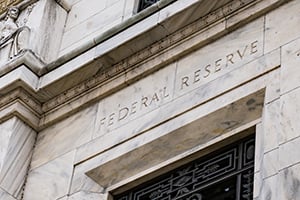 The regular meeting of the Fed starts today. Tomorrow, the Fed will issue a press release, describing any actions it decides to take, and hold a press conference where the chair, Jerome Powell, will take questions.
The regular meeting of the Fed starts today. Tomorrow, the Fed will issue a press release, describing any actions it decides to take, and hold a press conference where the chair, Jerome Powell, will take questions.
The Fed’s policy has been very stimulative through the pandemic. But with the recent high inflation reports, the headlines are increasingly warning that the Fed risks an inflation breakout if it doesn’t tighten policy very soon. So far, the Fed has resisted such calls and doubled down on its determination to keep the pump primed until employment is all the way back to pre-pandemic levels. The drama this week will be whether the Fed sits tight or admits that inflation is rising and that the Fed needs to tighten.
Expect the Fed to Stay the Course
I fully expect the Fed to stay the course and keep policy stimulative. To understand why, let’s look at some details.
On a one-year basis, inflation is indeed high. On a two-year basis, which captures the downturn and the upturn, inflation is still in the normal range over the past decade. The one-year numbers are simply misleading. More, when we look at the scary numbers, if we take out a handful of outliers, those numbers look much less scary. I discussed this in some detail several days ago; as more data comes out, the story really hasn’t changed. When you dig in, on time frame and components, inflation is not nearly as bad as the headline numbers suggest.
And it appears to be easing, as expected. Lumber, in particular, has dropped in price in recent weeks, and supply crunches in other commodities are passing as well. Suppliers are catching up with demand, as expected in a capitalist system. While the backward-looking current numbers are bad, looking forward, many of the worst effects are likely to ease.
That is exactly what markets are now saying. The yield on the 10-year U.S. Treasury security, acutely sensitive to inflation, has dropped back down and remains at pre-pandemic levels. Investors in one of the largest markets in the world are saying inflation will pass, and that it is not nearly as bad as the headlines suggest.
The Real Problem
Employment, on the other hand, is worse than the headline numbers suggest. Job growth continues, but millions of people are still out of work, despite the labor shortage headlines. While many of those out of the labor force are now looking for jobs, that disconnect is still there. This is by far the bigger real problem with the economy right now, although the headlines suggest otherwise.
Since the Fed has a dual mandate—unemployment and inflation—that suggests it should indeed keep its focus on unemployment, rather than inflation. And that means continuing to provide monetary stimulus to help the real economy.
Over the past decade, there have been repeated warnings that inflation was taking off, which proved to be false. There have been repeated scares that the central banks were going to tighten, and it hasn’t happened. Famously, the attempt to do so here in the U.S. most recently led to the “taper tantrum”—and then a swift reversal of that tightening decision.
Don’t Ignore the Signs
To argue that the Fed should, much less will, indicate that it is tightening any time soon is to ignore that history, ignore the temporary nature of the current adjustment-based inflation, and ignore the millions of people still out of work. I don’t expect the Fed to ignore any of those factors. And that means that the Fed will stand pat this week, continuing to keep buying securities to keep rates low.


 Print
Print

